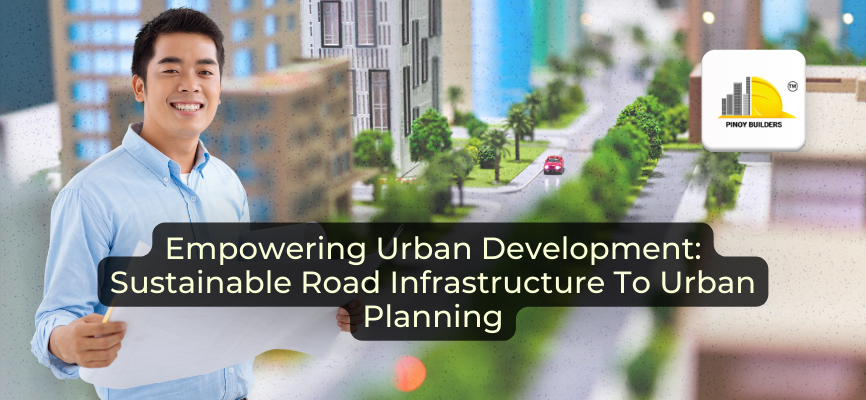Sustainable road infrastructure is gradually increasing its influence on the urban planning of many major cities. Sustainable road infrastructure refers to the adaptation of environment-friendly project designs and maintenance practices in order to reduce its negative impact on the planet. The practice is a modern solution to the growing urban population’s need to adapt to green, sustainable practices that will not only be beneficial to the environment but also to society by impacting economic and social development.
In its most basic function, urban planning increases a city’s livability. Its urban planning heavily influenced the standard of living in a certain city. A city with an efficient urban layout benefits from better access to essential services, such as transportation, hospitals, and schools. In addition to this, a city with a carefully designed urban plan also has the ability to allocate sufficient spaces for public infrastructure that are meant for recreational and social functions. The availability of public parks, sports facilities, and museums in cities increases the city residents’ standard of living.
The Adaptation Of Sustainable Road Infrastructure In Urban Planning
The integration of sustainable road infrastructure in urban planning can bring a wide range of advantages. By adapting more environmentally-friendly road infrastructures, urban layouts can reduce their negative impact on the planet. Destructive by-products of non-sustainable road infrastructures like greenhouse gas emissions, air pollution, and the destruction of natural habitats can be significantly lessened by building better and greener road infrastructures.

Sustainable road infrastructure promotes sustainable transportation modes, which can also be beneficial to the overall standard of living and health of city residents. Healthy activities such as walking, running, and cycling are given priority in sustainable road infrastructures. In addition to that, fewer cars and more walking and cycling help reduce harmful carbon emissions, which can then result in improved air quality.
A Green City With Sustainable Road Infrastructures
While it may be advantageous for every city to integrate sustainable road infrastructure into their urban planning, the reality is that the transition poses a lot of challenges, especially in developing countries like the Philippines. The Philippines faces several challenges in acclimating to sustainable practices due to various systemic and economic reasons, including the lack of awareness is greener practices by the Filipinos themselves. As a result, while it may be the best choice, every city acclimating sustainable road infrastructure into their urban layouts can be a complex goal to achieve.
Although adapting sustainable road infrastructure in urban planning may require a lot of effort from various sectors of the government as well as the residents, it is not an impossible shift. Implementing sustainable efforts in a city’s urban planning might require political will, public engagement, and institutional support, but it is achieved with sufficient engagement and education. By overcoming these challenges, the Philippines can create more sustainable road infrastructures and make greener cities with better living conditions.
One-Way Street Towards A Sustainable Future
Adding sustainable road infrastructure in urban planning may require strategies for the city and its residents to get involved together. Especially in many cities of the Philippines where the presence of densely populated area are normal, participation from all sides is needed, apart from the necessary financial funding. For the Philippines to adapt to sustainable road infrastructure, both the government and the residents should compromise to meet a solution that is both sustainable for the environment and beneficial to the residents.
Green Light On A Green Future
Merging sustainable road infrastructure into urban planning involves transitioning to greener transportation modes and building environmentally friendly public infrastructures. Implementing sustainable road infrastructures can improve the environmental status of cities, as well as improve the social, economic, and living situation in the area.

There is a need for collaboration among urban planners, engineers, transportation experts, and the government in order for the residents to be able to adopt sustainability in their daily lives. In addition to this, every city might need a different design and methods of implementation. There is a need for continuous monitoring to see what efforts for sustainability work and what does not. But the benefits of sustainable road infrastructure outweigh the issues a city might face during implementation. The benefits of sustainable road infrastructures include less traffic jams, improved air quality, and improved aesthetics, which can all be beneficial to the city for many years to come.
References:
- Iberdrola (n.d.) Sustainable infrastructure, a must in the fight against climate change. Retrieved from: https://www.iberdrola.com/sustainability/sustainable-infrastructure



